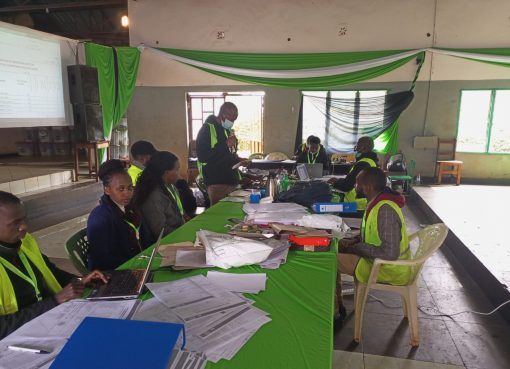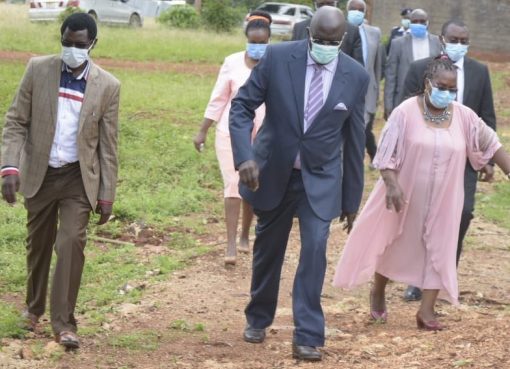The Digital Literacy Progragramme (DLP) came as a blessing to many Kenyan Children as it is said to have increased and maintained the number of pupils in class.
A visit to St. Peter’s Primary School in Narok North Sub County revealed that the number of pupils in grade one to three had tremendously shot up as compared to the period before the digital gadgets were introduced.
“Classes used to have less than 40 pupils with numerous cases of absenteeism every week. The situation has since changed with the introduction of the digital gargets, as many learners are eager to have a touch of it,” said Ms. Mary Mbithe, a grade one teacher in St. Peter’s Primary School.
Ms. Mbithe however, challenged Teachers Service Commission (TSC) to employ more teachers to cater for the high demand in schools following the influx of pupils who go up to 60 pupils per class.
“The programme is a good move but the ratio of teacher to pupil should be looked at keenly so that teachers do not lose class control. The required ratio is one teacher to 40 learners, said Ms. Mbithe.
She also lamented frequent black outs and technical challenges during the learning session that usually force classes to shift to the old form of learning.
The Head teacher, Oldepesi Primary School in Narok West Sub-County, Ms. Anne Bor lauded the programme, saying it has helped in improving the class performance.
“The pupils are very attentive and active in class. They find it more exciting to learn than before when they had to do a lot of writing,” said Ms. Bor.
She said the school was given 79 tablets and two laptops for the teachers which they use to teach social studies,
mathematics, English, Kiswahili and supplementary topics like story books and Tusome (for the pupils learning to read).
The officer in charge of ICT in Narok County, Cyrus Ngetich said 32,809 tablets, 1,146 laptops for teachers and 573 projectors had been issued to schools in the county.
He noted that the programme had covered 93 percent of the schools in the six sub counties in the county which represents 573 schools out of 616 schools in the county.
“Our target was to reach out to 616 public schools in the six sub-counties in our county. But the fact that 93 percent of the schools are covered and still rolling out shows we are doing well,” he said.
He was in agreement that the main challenge they were facing was physical damages of the devices, power blackouts and some schools not yet connected with power.
Ngetich commends the ongoing refresher courses for the teachers saying it will improve on their knowledge to handle the gadgets and the learners.
The officer further refuted claims by Kenya National Union of Teachers (KNUT) Secretary General, Wilson Sossion in the recent past that the programme was a failure.
“I am confident that we are on the right track as things are moving on as planned. We may not have scored 100 percent, but we are improving day by day and I am optimistic that in few days we will have achieved our dream,” said the ICT official.
He said they were keen in the successful implementation of the new Competency Based Curriculum (CBC), saying the devices will be encrypted with the new syllabus.
“The DLP was implemented to close the digital gap in our nation and we are focused on seeing to it that the goal is achieved. It has been a rough road but we are still moving on to achieve the set goals,” he noted.
The Narok County Commissioner (CC), George Natembeya asked all parents to take advantage of the programme to ensure all children are enrolled in school.
“Last year, our county led in early marriages and teenage pregnancies after scoring 40 percent teenage pregnancies. We expect the trend to go down as many children are now enrolling in school,” he said.
He challenged chiefs to be in the frontline of ensuring all school going children remain in school as the government has paid for their education.
The programme which was started by the government in 2013 aims at ensuring pupils in standard one to three are able to use digital technology and communication tools in learning with an overarching objective of transforming learning in Kenya into a 21st Century education system.
In February this year, ICT Cabinet Secretary (CS), Joe Mucheru clarified that the DLP was being implemented in phases and that construction of computer laboratories were one of the deliverables in phase two of the programme.
The CS said the computer labs were meant to enable learners from the upper grades of class four to eight access computers for learning to ensure that there is inclusivity for all the learners.
By Ann Salaton/Alvin Murithi




